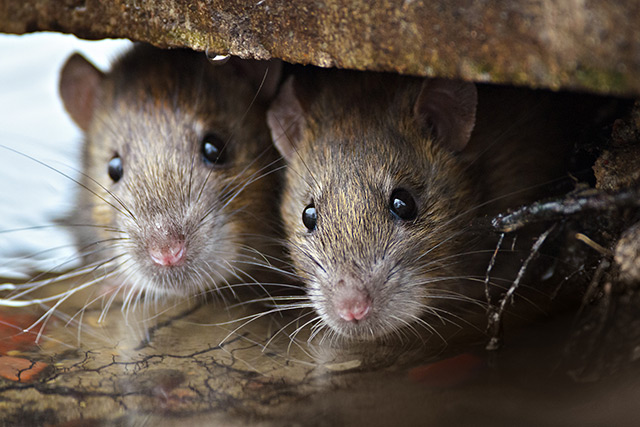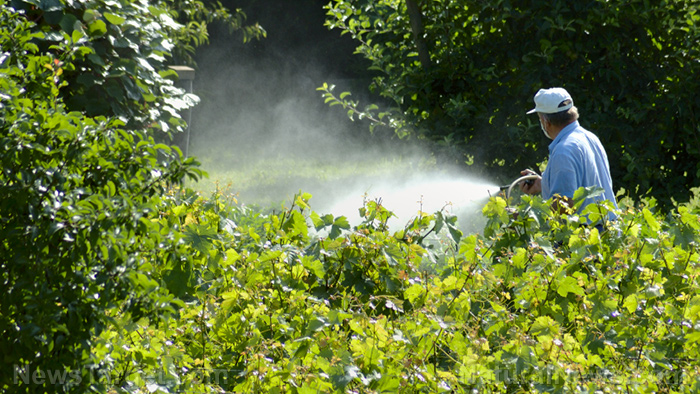Analysis of mutated fern spores sheds light on link between mercury and mass extinction
02/02/2022 / By Virgilio Marin

A study published in the journal Science Advances found that increased mercury levels in the environment may have contributed to the mass extinction more than 200 million years ago. An international team of researchers analyzed mutated fern spores from core samples dating to that period and found a strong link between mercury and the mass extinction event.
“By looking at fern spores in sediments from the mass extinction, it was evident that these ferns were negatively affected by the mercury levels,” said lead author Sofie Lindstrom of the Geological Survey of Denmark and Greenland.
Increased mutations in spores
Around 80 percent of the species went extinct 201 million years ago, at the end of the Triassic period. The die-off is believed to be caused by large-scale volcanism in a Large Igneous Province (LIP) – landforms created out of massive volcanic events.
According to the researchers, volcanic activity in LIPs is thought to be responsible for four of the five largest mass extinctions in the last 500 million years. The proposed mechanism contributing to the extinction events is the release of enormous amounts of carbon dioxide. But recent studies suggest that other mechanisms may have been involved.
For instance, co-author Hamed Sanei of Aarhus University in Denmark previously found that mercury levels were abnormally high during the largest mass extinction in Earth’s history — the end-Permian crisis. Other studies also showed that the mercury concentrations were elevated in Triassic-Jurassic boundary sediments over a very large area, stretching from Argentina to Greenland and from Nevada to Austria.
Lindstrom and her colleagues were curious about whether mercury played a role in the end-Triassic mass extinction. After all, volcanic activity can release phytotoxic pollutants (poisonous to plants) such as mercury and fluoride. The team examined fern spores from core samples dating from the end of the Triassic and searched for mutated spores. Mutations would indicate that these organisms were exposed to mercury, as phytotoxic pollutants can cause visible malformations.
Indeed, the researchers found a link between increased mercury levels and mutations in the spores. “During the mass extinction, the mutated spores become increasingly common, and in turn, the mutations get more and more severe,” said Lindstrom.
In some counts, the researchers found almost only mutated spores and no normal ones. Moreover, the rise in mutations coincided with a period of increased volcanic activity in a LIP called the Central Atlantic Magmatic Province.
Mercury may have also affected entire food chain
Because mercury is mutagenic, its increased distribution could explain the sudden deterioration of the ecosystem. In turn, the spores could serve as indicators of increased mercury poisoning in other species.
“This could hint to that the whole food chain might have been negatively affected,” said Lindstrom.
There are also possible explanations for the mutations. In previous studies of malformed pollen during the end-Permian mass extinction, scientists suggested that the mutations were caused by increased UVB radiation from volcanism. While the researchers acknowledged that this is one possible cause of the end-Triassic mutations, they found only low amounts of mutated pollen and said that the end-Permian spores did not appear to exhibit the same types of malformations in the end-Triassic spores. (Related: Dead fish carry toxic mercury to deepest parts of the ocean, study reveals.)
“This may indicate different causes for the plant mutations at the two events,” said co-author Bas van de Schootbrugge of Utrecht University in the Netherlands.
The researchers concluded that mercury was responsible for the spore mutations and likely affected other plants and the entire food chain too.
Read more studies about the environmental effects of mercury at HeavyMetals.news.
Sources include:
Submit a correction >>
Tagged Under:
discoveries, Ecology, environment, mass extinction, mercury, mercury poisoning, mutations, natural disaster, phytotoxic pollutants, plants, research, spores
This article may contain statements that reflect the opinion of the author
RECENT NEWS & ARTICLES
COPYRIGHT © 2017 POISON NEWS




















